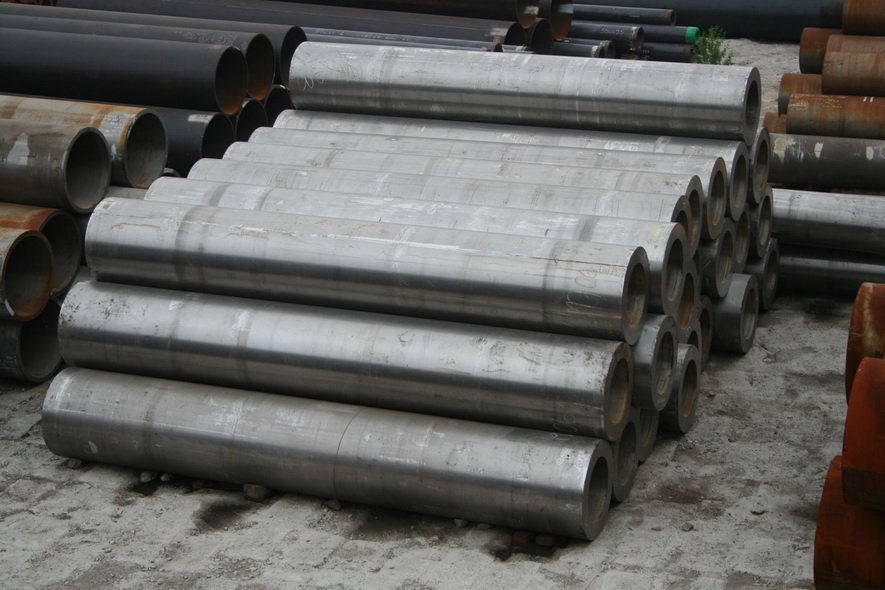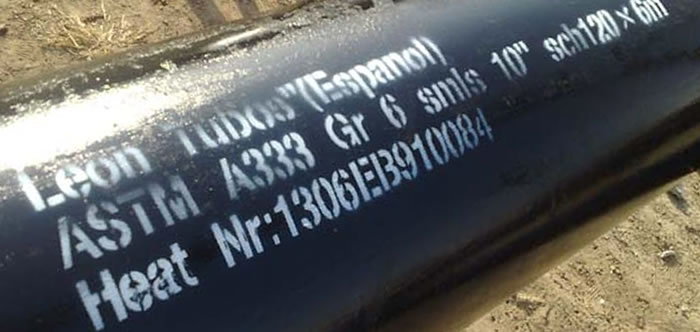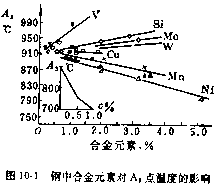 Seamless steel pipe
Seamless steel pipe- pipeline
- OCTG
- ASTM pipe
- API pipe
- Heavy Wall Steel Pipe
- Boiler steel pipes
- Casing and tubing
 Welded steel pipe
Welded steel pipe- spiral steel pipe
- ERW pipe
- SSAW pipe
- DSAW pipe
- LSAW pipe
 Carbon steel pipe
Carbon steel pipe- Black steel pipe
- fluid pipe
- Pipeline Coating,2PE 3PE
- Structural steel pipe
- Mild Steel Pipe
 Alloy pipe
Alloy pipe galvanized steel pipe
galvanized steel pipe stainless steel pipe
stainless steel pipe steel pipe schedule
steel pipe schedule pipe fittings
pipe fittings
ASTM A335 pipe - Pipe standard:P2 P5 P9 P11 P12 P22 P91 P92
1.seamless alloy pipe
2.ASTM A335 Standard
3.P2 P5 P9 P11 P12 P22 P91 P92
4.Origin: China &Japan
5.ISO,CE,BV,SGS,LR,IBR
 Alloy steel and heat resistant steel tube/alloy pipe/alloy steel pipe/a335p11 pipe
Alloy steel and heat resistant steel tube/alloy pipe/alloy steel pipe/a335p11 pipe
Standard: ASTM (ASME)
Grades: T91, P91, P11, TP309S, TP310S, P2, T2,
P12, T12, P22, T22, P5, T5, TP347H, TP347
Outer diameter: 25mm to 1800mm
Wall Thickness: 1.5mm to 60mm
Length: Max. 18m
We also produce other specifications according to customers' requirements
Foreign standards implemented: DIN, JIS, ASTM (ASME)

|
Product Name: Alloy seamless pipe |
||||||||
|
1. |
Standard |
Grade |
Standard |
Grade |
Standard |
Grade |
||
|
ASTM |
DIN |
JIS |
||||||
|
2. |
A210-C |
1629/4 1629/3 |
St52.4 St52 st52-3 |
G3455 G3456 |
STS49 STPT49 |
|||
|
3. |
A333 A334 |
SEW680 |
TT ST35N |
G3460 G3464 |
STPL39 STBL39 STPL46 STBL |
|||
|
4. |
A335-P1 A213-T12 A335-P2 A213-T5 A335-P5 A213-T9 A335-P11 A335-P12 A335-P22 |
17175 |
15Mo3 13GrMo910 12GrMo195 |
G3558 G3462 |
STPA12 STBA12 STBA13 STPA22 STBA22 |
|||
Should any of these items be of interest to you, please let us know. We will be happy to give you a quotation upon receipt of your detailed requirements.
With the continuous development of modern industry and science and technology, machinery manufacturing, the strength of the workpiece, the hardness, toughness, ductility, wear resistance, as well as a variety of other physical and chemical properties of the rising, carbon steel has not fully meet These requirements. Reasons:
(1) The size is not too big of parts made from carbon steel. Otherwise, due to insufficient hardenability and can not meet the requirements of strength and ductility, toughness. Adding alloying elements to increase the hardenability. (2) made of carbon steel, the cutting tool can not meet the requirements of the cutting red rigid. Alloy tool steel, high-speed steel and carbide. (3) can not meet the requirements of the special properties of carbon steel, such as requiring heat resistance, low temperature resistance, corrosion resistance, strong magnetic or non-magnetic, special alloy steel can with these properties.
11.1 presence of alloying elements in the steel
11.1.1 alloying elements and the interaction of carbon steel, the formation of carbides present in the steel
Interaction of alloying elements in steel and carbon, they can be divided into two categories:
(1) does not carbide-forming elements (called non-carbide-forming elements), including nickel, silicon, aluminum, cobalt, copper, etc.. Since these elements and the binding force of the carbon is smaller than the iron, so in the steel, they can not and carbonized together, they are the carbides of the steel structure and no significant effect.
(2) carbide-forming elements (referred to as a carbide-forming element), based on the strength of their force to combine with carbon, the carbide-forming elements is divided into three categories.
1) weak carbide forming elements: manganese
The manganese carbon binding force only slightly stronger than iron. Manganese added to the steel, and generally do not form special carbide (Structure and Fe3C different carbides called special carbide), but is dissolved in the cementite.
2) in the strong carbide forming elements; chromium, molybdenum, tungsten,
3) the strong carbide forming elements: vanadium, niobium, titanium
High stability, such as TiC l 000C quenching began to slow dissolution, these carbides have high hardness, for example, in the high-speed steel plus vanadium, forming the V4C make it higher abrasion resistance.
11.1.2 alloying elements dissolved in the ferritic or austenitic , in the form of a solid solution exists in the steel
11.1.3 alloying elements and the steel in the presence of nitrogen, oxygen, sulfur and other compounds, such as nitrides, oxides, sulfides and silicates in the form of nonmetallic inclusions in the steel
11.1.4 free state, that is not soluble iron, nor soluble compounds: lead, copper
11.2 alloy elements on the balance of steel organizations
Performance in changing the state diagram of the iron-carbon alloy
11.2.1 the influence of the alloying elements on the critical temperature of the steel
Manganese, nickel, copper A3 line decreased, molybdenum, tungsten, silicon, vanadium A3 line increases. The same effect on A1 , a greater degree of influence,
11.2.2 alloying elements of the steel eutectoid point ( S point) position
Most alloy eutectoid point to the left, molybdenum and tungsten in the mass fraction of the eutectoid point shifted to the right.
11.2.3 of alloying elements on the size of the austenite phase region
11.2.3.1 expand γ District
Alloying elements and the γ -Fe α -Fe to form a solid solution, at room temperature for the austenitic microstructure. Ni, Mn
11.2.3.2 reduce γ District
Inhibition of F to A transition, Cr
11.3 of alloy elements on the influence of heat treatment
11.3.1 alloying elements austenitizing
Austenite grain in ferrite and carbide boundary nucleation and growth; remaining carbide dissolution; austenitic components
A uniform residence time at high temperature, austenite grains grow roughening process. Addition of alloying elements in steel after three processes have a greater impact.
(1) containing a carbide-forming element of the alloy steel, carbide, their organization is more stable than cementite alloy cementite or special carbides, therefore, when the austenitization heating carbides less soluble i.e. require a higher temperature and longer time. Generally, alloying elements carbide forming tendency stronger and and its carbide is also more difficult to dissolve.
(2) homogenization of the alloying elements in the austenite, and also requires a long time, because the diffusion rate of the alloying elements, which are much less than the diffusion rate of carbon.
(3) certain alloying elements strongly hinder austenite grain coarsening process, which is mainly related to and alloy carbides difficult dissolved The undissolved carbides impede the austenite grain boundary migration, therefore, contain strong carbide forming elements (such as molybdenum, tungsten, vanadium, niobium, titanium, etc.), steel, austenitizing heating is easy to obtain the fine grain of the tissue.
Various alloying elements on the austenite grain coarsening process can generally be summarized as follows:
1) strong block the grain coarsening elements: titanium, niobium, vanadium, aluminum, etc., in which the strongest role of titanium.
2) the strong carbide forming elements tungsten, molybdenum, chromium, also significantly hinder austenite grain coarsening process.
3) is generally believed that the silicon and the nickel can also hinder the coarsening of austenite grains, but the effect is not obvious.
4) manganese and phosphorus in the austenite grain coarsening elements.
11.3.2 alloying elements on the austenite decomposition transformation
The majority of alloying elements austenite decomposition transformation slowed, C-curve to the right, is to improve the steel hardenability.
The influence of alloy elements on martensitic transformation
Increase the cooling time, to reduce the cooling rate.
In addition, the alloying elements on the martensitic transition temperature (Ms point ) also have a significant impact. Most of the alloy elements were the martensite transition temperature (Ms point ) lower, in which manganese, chromium, nickel role most strongly, only aluminum, cobalt is to raise the Ms point.
New Update Pipe List
-
Hot rolled seamless steel pipe production
Hot rolled seamless steel pipe production. API 5l A53 ERW Pipe
API 5l A53 ERW Pipe,ERW steel pipe JCEO Wall thickness:0.5mm-25 ISO,TUV,AD,PED cert. GB/T3091-2001 Material include Q235 20# 16Mn(Q345,Q215) . Water line pipe
Water line pipe Size:4" to 60" carbon steel seamless pipeline, piplines,ERW line pipes,Spiral pipes.SSAW COATING PIPE LINE : [ Spiral Submerged Arc Welding (SAWH) steel pipeline]. API 5L Line Pipes X42
API 5L Line Pipes X42,API 5L: A25, A, B, X42, X46, X52, X56, X60, X65, X70, X80 API 5CT: J55 K 55 M65 N80 L 80 C 90 T 95 P110 H40 Q125 CS-90 SCS-95 SCS-80 TCS-110T .
Hot Click PRO
-
Thin-walled steel material parameters Reverse
Thin-walled steel material parameters Reverse,Advanced design and manufacture of the State Key Laboratory of auto body Hunan University, Changsha, 4100822. Abstract: identify the problem for thin-walled steel material parameters, using a. ASTM A106/A53 GR.B 32 INCH Carbon Seamless pipe
1. Carbon Seamless Steel Pipes of API 5L/ ASTM A106/A53 GR.B.2. Hot Expanded Seamless Steel Pipes.3. ERW Steel Pipe.. ANSI steel pipe schedule chart - SCH40 SCH80 seamless ERW pi
ANSI steel pipe schedule chart - SCH40 SCH80 seamless ERW pipe . A53 SCH40 Welded Carbon Steel Pipe
A53 SCH40 Welded Carbon Steel Pipe, Grade: A53 GR. B, API 5L GRB, API 5CT GR. B, ST37, ST52 Outside Diameter: 1/2"-72" Wall Thinkness: 0.5mm-80mm sch40--schXXS..
- Carbon steel pipe Standard
- ASTM A106 pipe
- ASTM A53 pipe
- ASTM A192 pipe
- ASTM A252 pipe
- ASTM A179 pipe
- DIN 1629 pipe
- DIN 17175 pipe
- Alloy pipe Standard
- ASTM A335 pipe
- ASTM A210 pipe
- ASTM A213 pipe
- ASTM A234 pipe
- ASTM A519 pipe
- Stainless pipe metrial
- 304, 304L, 304SS pipe
- 310, 310S pipe
- 316, 316L pipe
- Pipe Fitting Metrial
- Carbon steel: A234 WPB pipe
- Stainless steel: 304,316 pipe
- Alloy steel: A234 WP5 WP9 WP11 WP22 pipe

